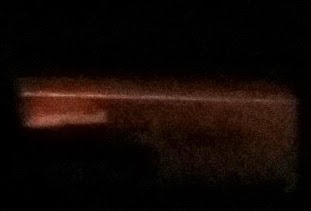Moon is an Alien Base...!!
Here are some very weird facts about our moon!
1. Moon’s Age: The moon is far older than previously expected.
Maybe even older than the Earth or the Sun. The oldest age for the Earth is
estimated to be 4.6 billion years old; moon rocks were dated at 5.3 billion
years old, and the dust upon which they were resting was at least another
billion years older.
Note: Most of the pictures on this post are from NASA.
2. Rock’s Origin: The chemical composition of the dust upon
which the rocks sat differed remarkably from the rocks themselves, contrary to
accepted theories that the dust resulted from weathering and breakup of the
rocks themselves. The rocks had to have come from somewhere else.
| ONE OF MANY FAMOUS MOON FACES |
|
3. Weird Orbit: Our
moon is the only moon in the solar system that has a stationary, near-perfect
circular orbit. Stranger still, the moon’s centre of mass is about 6000 feet closer
to the Earth than its geometric centre (which should cause wobbling), but the
moon’s bulge is on the far side of the moon, away from the Earth.
"Something" had to put the moon in orbit with its precise altitude,
course, and speed.
| VISIBLE SPACECRAFT CRASHED IN TO ONE OF MOON CRATERS
|
4. Moon Diameter:
How does one explain the "coincidence" that the moon is just the
right distance, coupled with just the right diameter, to completely cover the
sun during an eclipse? Again, Isaac Asimov responds,
"There is
no astronomical reason why the moon and the sun should fit so well. It is the
sheerest of coincidences, and only the Earth among all the planets is blessed
in this fashion."
5. Seismic Activity: Hundreds of "moonquakes" are
recorded each year that cannot be attributed to meteor strikes. In November,
1958, Soviet astronomer Nikolay A. Kozyrev of the Crimean Astrophysical
Observatory photographed a gaseous eruption of the moon near the crater
Alphonsus. He also detected a reddish glow that lasted for about an hour. In
1963, astronomers at the Lowell Observatory also saw reddish glows on the
crests of ridges in the Aristarchus region. These observations have proved to
be precisely identical and periodical, repeating themselves as the moon moves
closer to the Earth. These are probably not natural phenomena.
6. Hollow Moon: The moon’s mean density is 3.34 gm/cm3 (3.34
times an equal volume of water) whereas the Earth’s is 5.5. What does this
mean? In 1962, NASA scientist Dr. Gordon MacDonald stated:
"If the astronomical data are reduced, it is found that
the data require that the interior of the moon is more like a hollow than a
homogeneous sphere."
Nobel chemist Dr. Harold Urey suggested the moon’s reduced
density is because of large areas inside the moon where is "simply a
cavity."
MIT’s Dr. Sean C. Solomon wrote,
"the Lunar Orbiteer experiments vastly improved our
knowledge of the moon’s gravitational field... indicating the frightening
possibility that the moon might be hollow."
In Carl Sagan’s treatise, Intelligent Life in the Universe,
the famous astronomer stated, "A natural satellite cannot be a hollow
object."
7. Moon Mascons: Mascons, which are large, dense, circular
masses lying twenty to forty miles beneath the centres of the moon’s Maria, are
broad, disk-shaped objects that could be possibly some kind of artificial
construction. For huge circular disks are not likely to be beneath each huge Maria,
centred like bull’s-eyes in the middle of each, by coincidence or
accident."
8. Magnetic Rocks: Moon rocks were magnetized. This is
odd because there is no magnetic field on the moon itself. This could not have
originated from a "close call" with Earth—such an encounter would
have ripped the moon apart.
9.No Volcanoes: Some of
the moon’s craters originated internally, yet there is no indication that the
moon was ever hot enough to produce volcanic eruptions.
10. Heavier Elements on Surface: Normal
planetary composition results in heavier elements in the core and lighter
materials at the surface; not so with the moon. According to Wilson:
"The abundance of refractory elements like titanium in the surface
areas is so pronounced that several geologists proposed the refractory
compounds were brought to the moon’s surface in great quantity in some unknown
way. They don’t know how, but that it was done cannot be questioned."
11. Unusual Metals: The moon’s crust is much harder than presumed.
Remember the extreme difficulty the astronauts encountered when they tried to
drill into the maria? Surprise! The maria is composed primarily illeminite, a
mineral containing large amounts of titanium, the same metal used to fabricate
the hulls of deep-diving submarines and the skin of the SR-71
"Blackbird". Uranium 236 and neptunium 237 (elements not found in
nature on Earth) were discovered in lunar rocks, as were rustproof iron particles.
THERE ARE CURRENTLY FOUR (MAKE THAT FIVE) THEORIES OF THE
ORIGIN OF THE MOON:
1) The Moon originated at the
same time as the Earth, being formed substantially from the same material,
aggregating and solidifying in orbit.
2) The Moon was formed not in the
vicinity of the Earth, but in a different part of the solar system (or galaxy),
and was later captured by the Earth.
3) The Moon was originally a portion of the
terrestrial crust and was torn out, after the formation of the Earth, leaving
behind the bed of the Pacific Ocean.
4) The Moon is an artificial satellite,
which was brought into the vicinity of Earth by extra-terrestrials in order to
carry out some unknown agenda.
















































